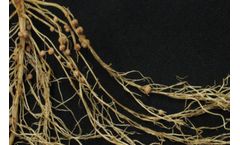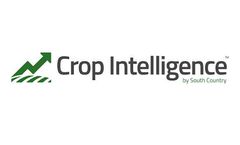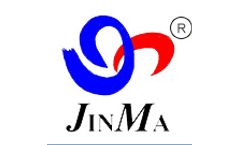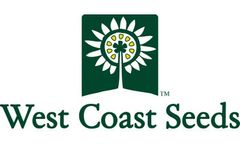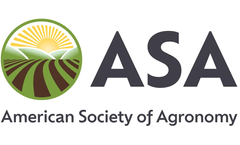Crop Nitrogen Articles & Analysis: Older
22 articles found
The market is segmented into fertilizers, pesticides, adjuvants, and plant growth regulators, with key applications in crop-based and non-crop-based sectors. Market Overview Market Size for 2024: The agrochemicals market is projected to reach USD 253.29 billion. ...
Manna Irrigation offers a customized cloud-based, sensor-free software solution that helps growers and corporations optimize irrigation and monitor crop growth. Why Choose Manna Irrigation? Optimized Irrigation Maximize irrigation efficiency to enhance production processes and improve yield quantity and quality. ...
Applied directly onto the plant as part of your spraying program, this is different than the way a traditional pulse crop fixes nitrogen, for instance. While pulses rely on nodules in the root zone for nitrogen fixation, nitrogen-fixing bacteria utilizes plant leaves. As you spray the bacteria, it gloms onto your ...
“Part of the problem is people don’t trust the information,” says Ryan Hutchison of South Country Equipment in Saskatchewan. He was at Crop Connect 2019 in Winnipeg to give a presentation called Crop Intelligence — Trusting the Data. ...
Summer Irrigation Makes the Crop Summertime. At this point in the growing season, fruit for tree and vine crops has long been set. ...
ByFarm(x)
Nitrification inhibitor refers to a class of chemical substances that inhibit the biotransformation of ammonium nitrogen into nitrate nitrogen (NCT). Nitrification inhibitors reduce the formation and accumulation of nitrate in soil so that it can reduce the loss of nitrogenous fertilizer in the form of nitrate nitrogen and the ...
The intention was to demonstrate that soil quality characteristics would either be enhanced, or at least maintained, through the use of green manure crops and that soil nitrogen levels could be enhanced. Organic horticulture practiced on this farm relies on the development of healthy fertile soils through the use of soil building crops of ...
When the plants are harvested or die back, the nitrogen (in ammonium form) is left in the soil, making it more fertile for the next crop that is planted. ...
Rapeseed was grown on Cd and Zn contaminated as well as clean soil under the greenhouse conditions. Solid and liquid nitrogen fertilizers were applied during the pot experiment in order to test their influence on heavy metal accumulation in plant tissues. ...
ByBiovala
” Typically, organic growers plant pulse crops solely for their nitrogen-fixing ability and use them as green manure. ...
An ecosystem service approach was used to study the water purification service exemplified by impacts of land management scenarios. Nitrogen retention was calculated in two agricultural catchments by the dynamic Integrated Nutrients in Catchments (INCA)-N model. ...
The objective of this study was to assess nitrogen NPS load reduction efficiency by spatially adjusting crop plantings as an agricultural conservation management (ACM) measure in a typical small agricultural watershed in the black soil region in northeast China. ...
Cover crops in direct seeding mulch-based cropping (DMC) systems can be an effective tool to optimize N management for crop production in the Brazilian cerrados. ...
Cover crops in direct seeding mulch-based cropping (DMC) systems can be an effective tool to optimize N management for crop production in the Brazilian cerrados. ...
Knowledge of complex relationships between soils, crops, and management practices is necessary to develop sustainable agricultural production systems. Objectives were to determine how maize (Zea mays L.) would respond to monoculture (C-C), 2-yr rotation (C-S) with soybean [Glycine max (L.) Merr.], or 4-yr rotation (C-S-W/A-A) with soybean, wheat (Triticum aestivum L.), and alfalfa (Medicago ...
Received for publication February 5, 2008. Brassica cover crops are new to the mid-Atlantic region, and limited information is available on their N uptake capabilities for effective N conservation. Forage radish (Raphanus sativus L. cv. Daikon), oilseed radish (Raphanus sativus L. cv. Adagio), and rape (Brassica napus L. cv. Dwarf Essex) were compared with rye (Secale cereale L. cv. Wheeler), a ...
In the low landscape positions, grain yield, total crop N uptake, grain yield increases (GYI), and crop nitrogen use efficiency (NUE) for fall-banded urea (all relative to spring-banded urea) increased linearly with delayed application dates and declining soil temperatures on date of application. However, only crop N uptake and ...
Crop rotation and N are management methods that can increase corn (Zea mays L.) grain yields. Our objective was to determine the corn grain yield response to six crop rotation sequences and four N rates in a long-term (35-yr) study. The rotations were continuous corn (CC), corn–alfalfa (Medicago sativa L.) (CA), corn–soybean [Glycine max (L.) Merr.] (CS), corn-corn-corn-alfalfa-alfalfa (CCCAA), ...
Improved crop and N management practices are needed to increase soil N storage so that N fertilization rate and the potential for N leaching can be reduced in tilled and nontilled soils. We examined the influence of cover crops and N fertilization rates on N inputs from cover crops, cotton (Gossypium hirsutum L.) and sorghum [Sorghum bicolor (L.) ...
Weather variability affects the production of most cropping systems, and rice (Oryza sativa L.)-wheat (Triticum aestivum L.) rotation is not an exception. Integrating weather forecasts with soil fertility management options is one way to combat the production decrease by anticipating weather variability along with sustaining the soil environment. Sequence analysis of DSSAT3.5 was used to select ...



